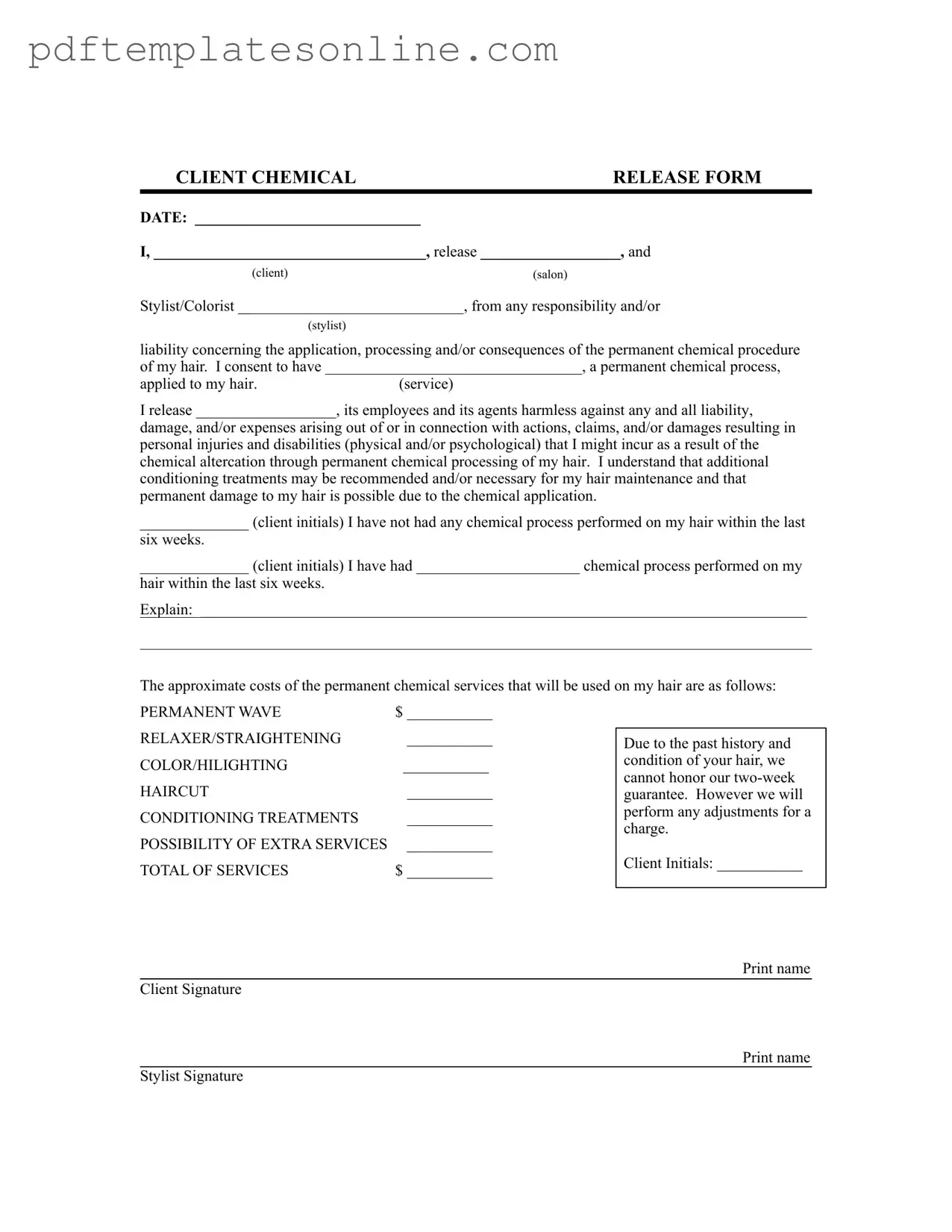Blank Salon Chemical Waiver Form
The Salon Chemical Waiver form is a document designed to protect both clients and salons during chemical hair treatments. By signing this form, clients acknowledge the potential risks associated with permanent chemical processes and release the salon and its staff from liability. Understanding the implications of this waiver is crucial for anyone considering such services.
Access Salon Chemical Waiver Editor Now
